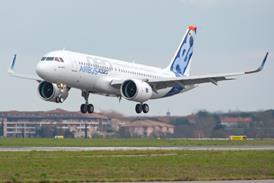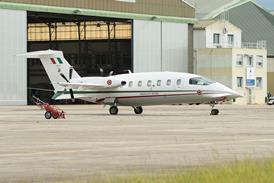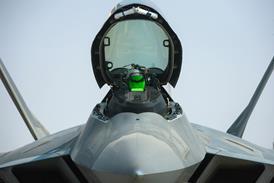Canadian manufacturer seeks first application as Agilis and Honeywell search for platforms for new engines
Pratt & Whitney Canada expects to start flight tests of its PW600 turbofan late this month on the company's Boeing 720 flying testbed as it searches for a launch customer.
The entry level and personal jet engine lost out to the Williams International FJ44-3A for a place on the new Cessna Citation CJ3. The first version of the PW600, the PW625F, is being demonstrated initially at 2,400lb (10kN) take-off thrust but, due to a scaleable compressor, also covers the 1,000 to 3,000lb-plus thrust range.
P&WC is expected to offer the engine for Raytheon's proposed Beech Premier II, the just unveiled Cessna Citation Mustang and the Safire S-26 personal jet. The company has outlined configurations for PW610F and PW615F variants. Airframes have not been specified.
Agilis, the Florida-based company originally slated to power the S-26, is meanwhile continuing to develop the TF-1000 turbofan despite being turned down by Safire. Agilis is running an initial core design in a test programme due to be completed in the first quarter of next year, and says a full-up TF-1000 could make its first flight on a testbed as early as October next year. The company has been approached by around 15 companies considering powerplant options for new single and twin- engined designs, any one of which could lead to a first run in 2004.
Honeywell is meanwhile launching a new 4,900lb-thrust turbofan which is a simple, low risk derivative of its TFE731-60 engine. Dubbed the TFE731-50, the engine is expected to make its first run next year and is scheduled for certification the following year. It will share a common core and virtually all other features of the -60, with the exception of a slightly scaled widechord fan.
The fan diameter will be reduced from 0.77m (2.5ft) to around 0.76m, with a consequent slight reduction in bypass ratio. The engine is expected to enter service with a built-in 200¡C (392¡F) red line operating margin. This, with improvements planned for the -60, is expected to result in a 3,000h hot section interval and a 10,000h compressor zone interval at service entry.
In common with the -60, the engine will also incorporate the N1 (low-spool) digital electronic engine control with hydromechanical back-up and single crystal high- pressure turbine and first-stage, low- pressure turbine blades. Honeywell remains coy about potential applications for the -50, but they are believed to include the Gulfstream 150 and re-engining the Gulfstream 100 (formerly Astra SPX), versions of which are also expected to be offered with uprated TFE731-40s.
Other possible contenders include a potential stretch variant of Bombardier's Learjet 45, a study version sometimes referred to as the Lear 46, and future Dassault Falcon derivatives to fill the niche between the 900EX and 2000.
Source: Flight International























